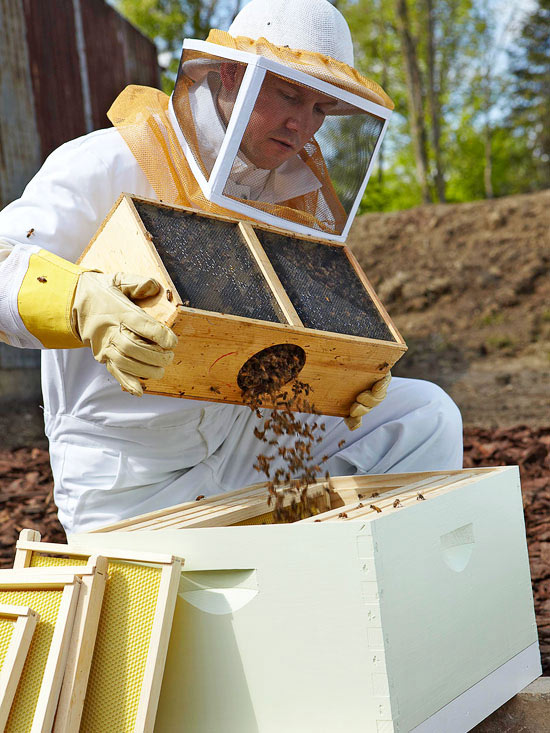






Honeybees are efficient, hard workers that have a big impact on gardens and crops. Without them, our food choices would be quite limited. Apples, oranges, lemons, limes, broccoli, blueberries, cucumbers, cantaloupes, carrots, avocados, and almonds are among the many crops that are pollinated by this tiny insect.
continue reading belowPeople of all ages can become beekeepers. It's important to do your homework before you get started. One of the first steps to consider is where you will keep the bees. Even though bees can thrive in city neighborhoods, even on rooftops, it's important to consider your neighbors and local zoning ordinances. Some municipalities allow the keeping of bees on lots that are less than a fourth of an acre, which indicates you don't need a lot of space, but a small lot is probably not the best site.
Look for a spot that has some distance from neighbors and from areas where children and pets play. Place the hive where the bees' direct flight path in and out of the hive will be 15-20 yards from houses or spaces where people enjoy outdoor activities. The proper care of bees is nonthreatening, but for those unfamiliar with bees or for those who might be allergic to stings, their acceptance of a hive next door isn't something to take for granted.
Screens, such as hedges or buildings, where neighbors can't see the hive can be a solution. A screen or building near the hive encourages the bees to fly up and away when leaving the hive, avoiding encounters with people.
A nearby water source, no farther than a quarter mile, is important. A shallow pan or a bird bath filled with water, along with rocks or a sandy slope on which bees can rest, will help keep bees on your property and out of your neighbor's yard. The water source must not dry up or bees will likely head to nearby watering spots, such as a neighbor's pool.
An investment of less than $300 and a few minutes each week in early summer will get you started. Standard equipment and estimated prices include:
Beekeeping tip: Avoid purchasing used equipment, which can harbor bacteria and diseases.
Learn more about how to set up your new beehive.
The best time to order equipment and bees is in the fall or early winter, for delivery of the bees in April. Early winter is an excellent time to take advantage of classes offered by beekeeping associations.
Most beekeepers love to share their knowledge. Find a beekeeper who is willing to be a mentor and you will be on your way to a beneficial, enjoyable hobby or business that offers sweet rewards.
Copyright © www.100flowers.win Botanic Garden All Rights Reserved